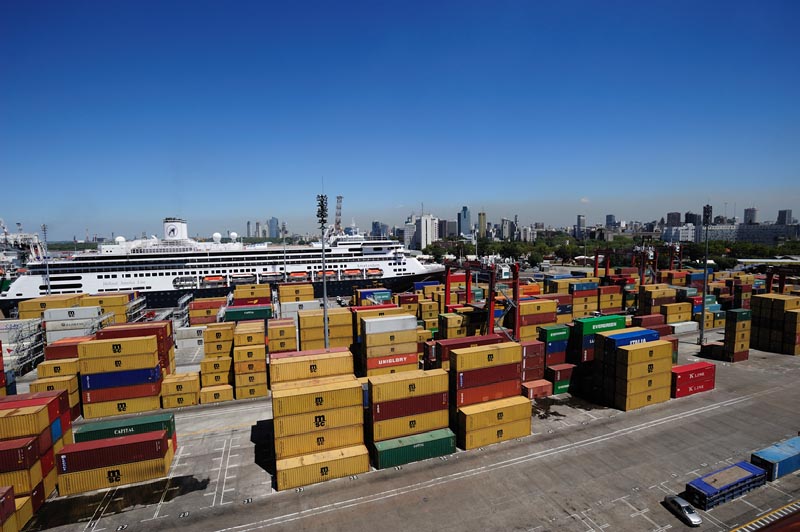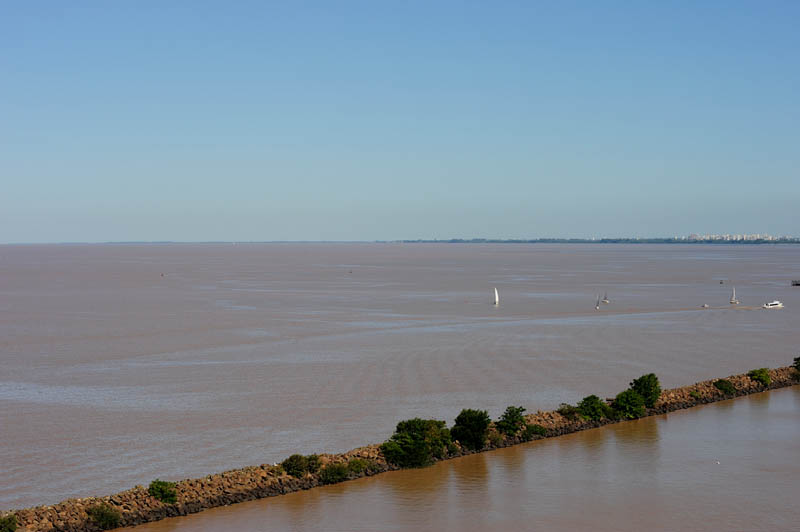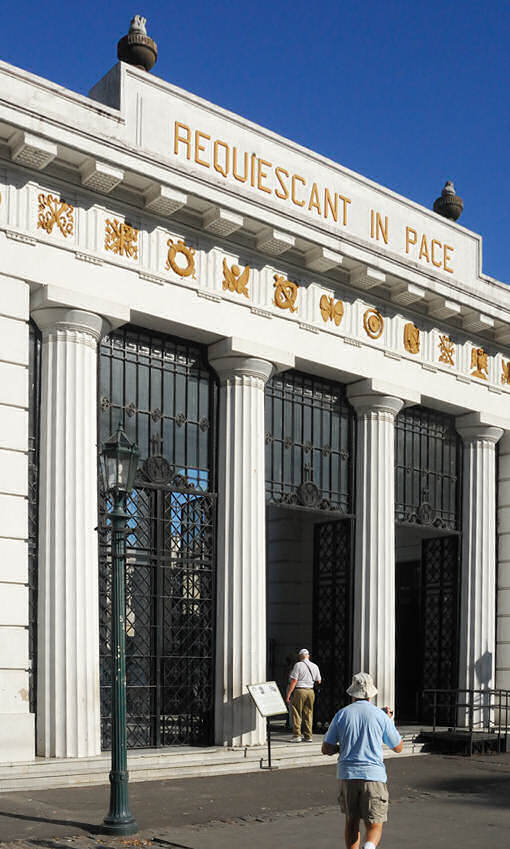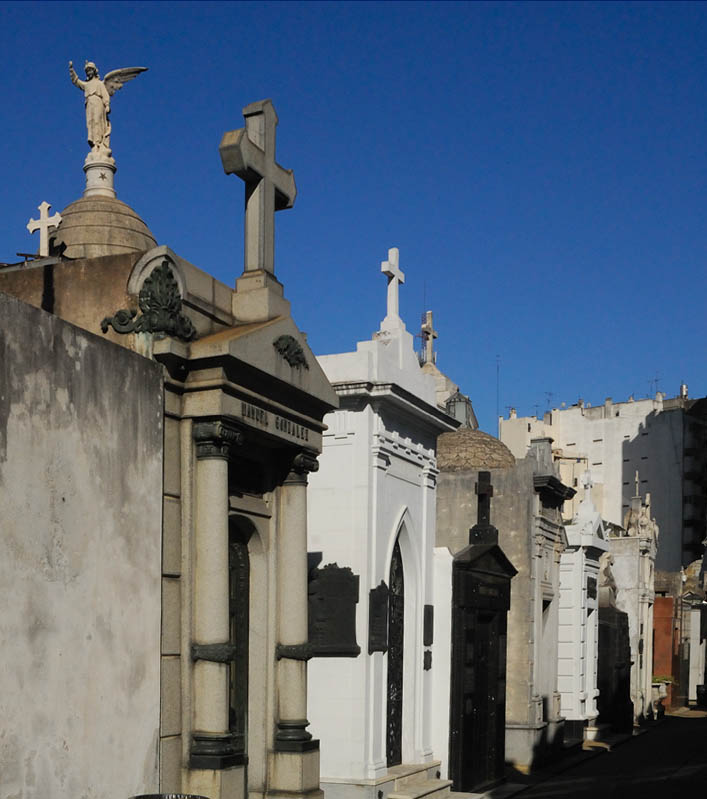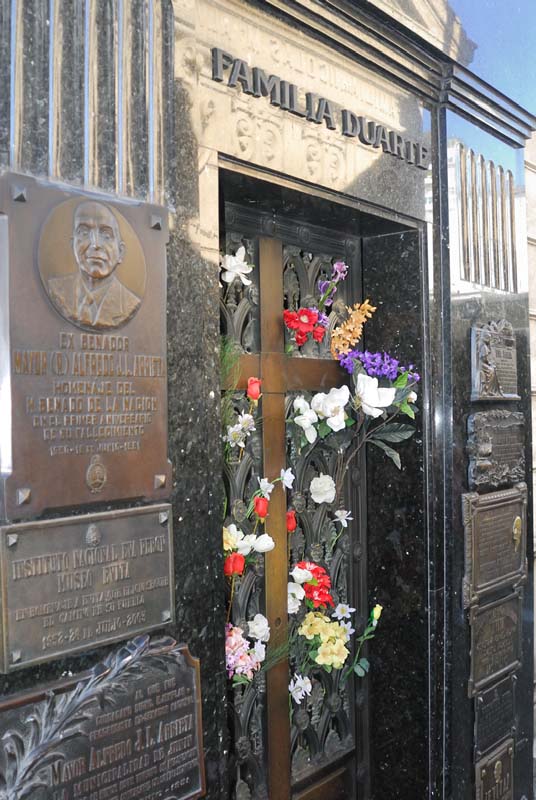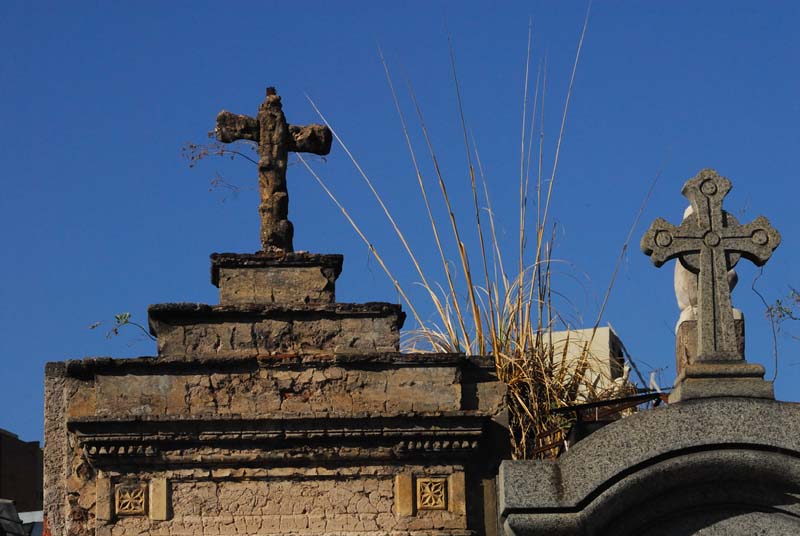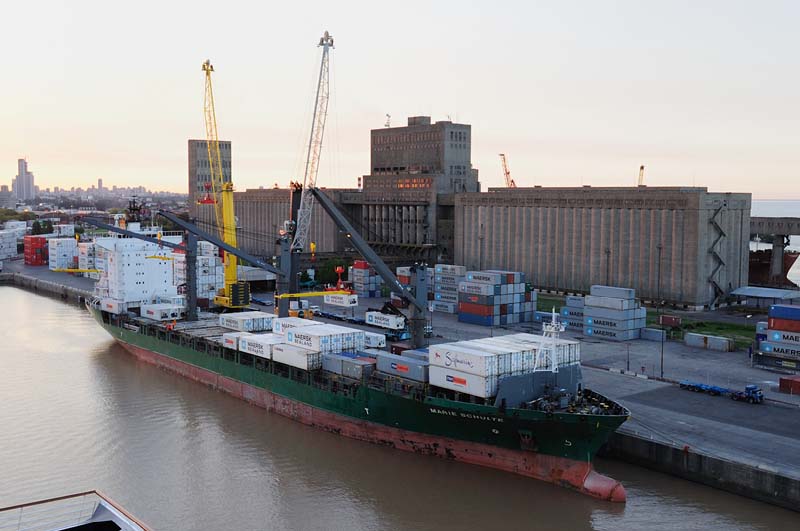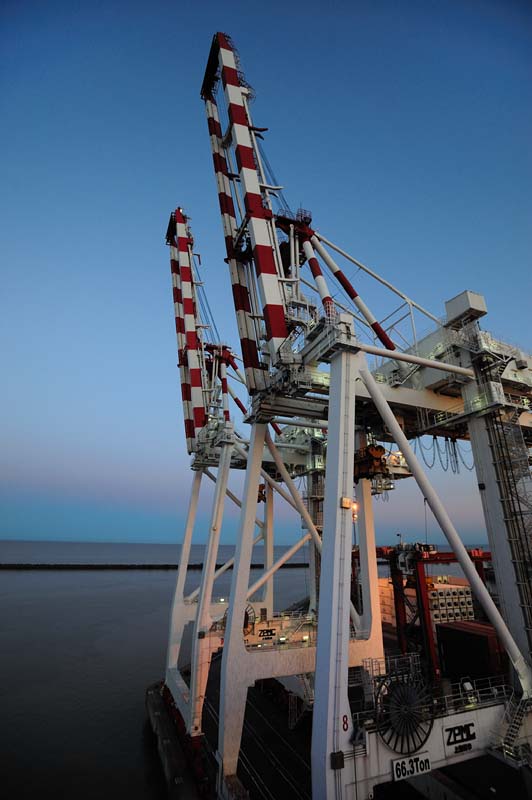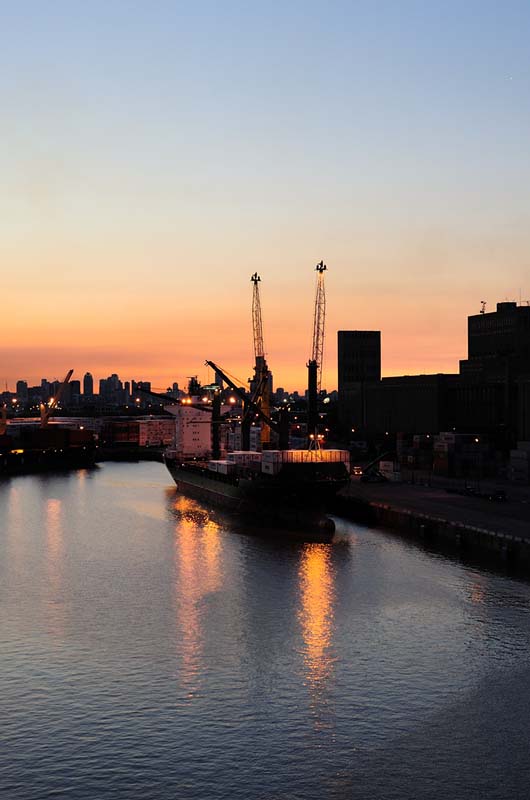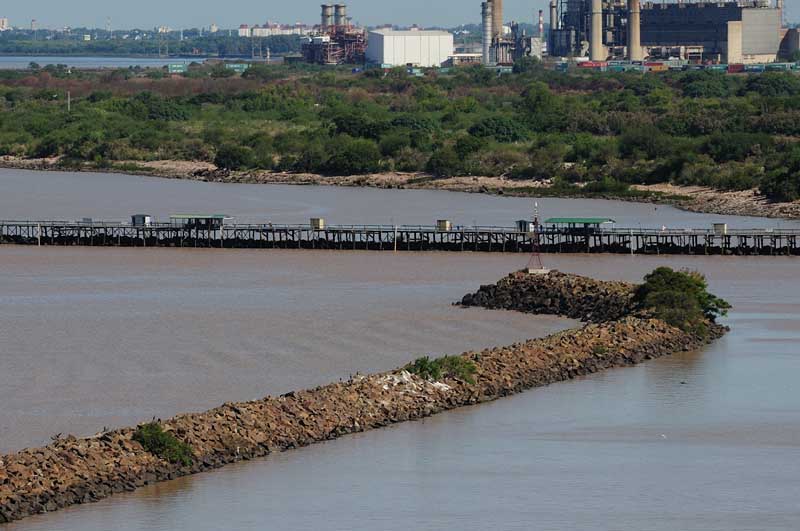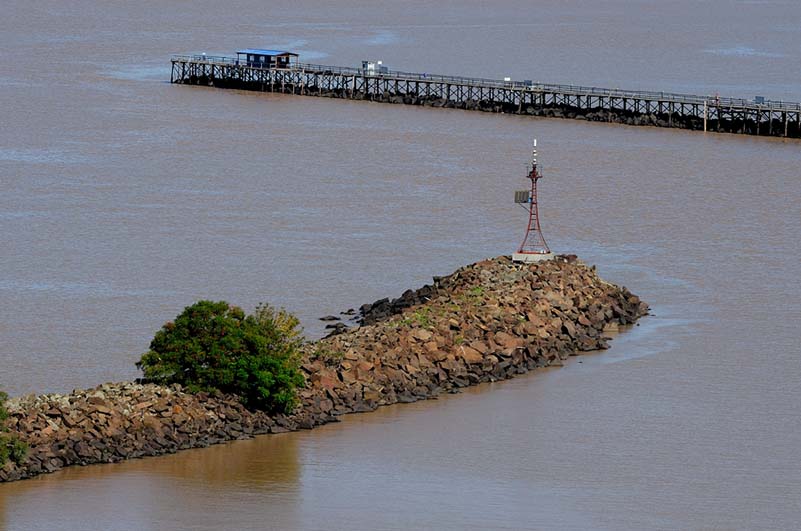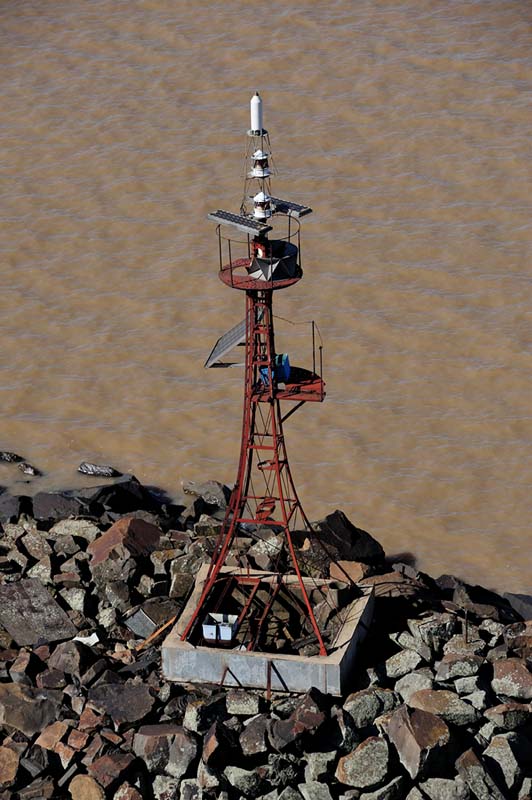 |
Our trip began Sunday evening, February 15th with a ride from home to JFK for the flight to Buenos Aires' Ezezia International Airport. The flight was long, 5300+ miles worth of boring, and uneventful. By the time we cleared customs and immigration, collected our luggage, and got to the pick up point for the transfer to our hotel in downtown Buenos Aires it had begun to rain. The ride into downtown, like so many I've taken from international airports distant from the city that they serve, passed all manner of neighborhood ranging from the very poor to gated, fenced enclaves that no doubt belonged to the wealthy. I was supposed to deliver a lecture at the Departamento de Quimica de Universidad de Buenos Aires at 1700 hrs. The Hotel Internacional, unfortunately, had a 1600 check in policy and they weren't bending on that! Around 1530, I guess I had become a sufficient visitor to the front desk that they made arrangements for me to grab a shower and change in the hotel's health club. That done, when I finally got in touch with my host, Prof. Gerardo Burton, I learned that he had called the hotel only to be frustrated when he was told that I hadn't arrived... not that I was there waiting to check in and that they didn't have a room ready for us. After so hurried planning, things got rearranged at the university for me to deliver the lecture at 1900 instead of 1700 hrs... despite the late hour there were still about 30 people attending the lecture. I hope that I was coherent since I hadn't slept in nearly 36 hrs. Tuesday morning dawned bright, sunny, and cool. We lazed around the hotel and had a leisurely breakfast waiting for the transfer to the Port of Buenos Aires at 1330. Getting our luggage after we got off the bus at the port, we started the check in process, which can ONLY be described as chaotic at best! After standing in one line for an hour, we were next in line only to have the agent manning the desk tell us that they were not checking in any more people at that desk. Then she walked away without bothering to tell us where to go or anything. Carnival, if you're reading this and ever do South America again, call up Holland American, and beg some of their personnel to help arrange check-in for passengers in Buenos Aires! After about another 30 min, courtesy of Linda's cane, we got in a short line and through the check in process. Then it was hop a shuttle bus to take us through the busy container area of the port out to the Splendor and cabin 1115 on the Spa deck that was to be our home for the next two weeks on the ship. The view from our balcony is below on the left -- ahhh, welcome to Containerville! When we arrived, Holland America's M/V Amsterdam was berthed at the port. She departed that first evening and a Costa Cruise Liner took her place during the night. The view of the Rio de la Plata, or River of Silver in English is shown on the right below... actually the color was pretty much cocoa brown from all the sediments washing down the rivers.
Some of the mausoleums fall into disrepair when the last member of the family that owns it dies off. After a time, since there is no room to expand the cemetary, the plot is recycled and taken over by another family. From Cemetaria de Recoleta, we went down Avenida 9 de Julio, past Teatro Colon, which is Buenos Aires' opera house, past the obelisk, which marks the center of Buenos Aires to Plaza de Mayo and the Pink House. No, you didn't read that wrong, the Argentine Presidential Palace is painted a shade of pink, which his perhaps befitting considering Evita and also that Argentina's current President is also a lady. From there we continued across town to one of Buenos Aires' two major soccer stadiums known as La Boca to a colorful old neighborhood know as Caminita, which was years ago painted using whatever colorful paints were available, a tradition that continues in that area to this day.
After Caminita we ended up on Buenos Aires' major shopping district... Florida Avenue. No that wasn't a mistype. From there it was back to the ship to hang out for a bit before we sailed for Montevideo at 1700. The M/V Splendor is a huge ship, nearly 1,000 feet long and she displaces 113,000 tons. As of when we sailed on her, she was Carnival's largest ship. A new ship being launched next September, however, will be larger still. At any rate, by 1700, the lines had all been cast off and we were moving away from the pier and forward toward the breakwall that protects Buenos Aires' harbor from the open waters of the Rio de la Plata. Some photos of the breakwater and the light that marks it are below. As you look at those, notice the opening between the breakwater and the pier that runs out into the river... we're going to go along the breakwater and then turn the 1,000 foot ship that we're on to do a hard 90 degree turn to port! Needless to say, it was an interesting maneuver to watch from up on deck 12.
The satellite image below (copyright Google Earth) shows the Buenos Aires harbor and more or less the route that the Splendor took departing the harbor for Montevideo. Obviously, the waters of the Rio de la Plata were far more blue the day this satellite image was made than the day we sailed!
|
